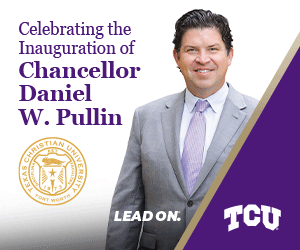When actress Carrie Fisher suffered cardiac arrest near the end of a flight to Los Angeles just before Christmas, some of the first emergency medical crews to arrive on the scene were on two wheels: medics on bicycles who helped resuscitate the “Star Wars” star.
The Los Angeles Fire Department’s bicycle medic team is one of hundreds in big cities such as Boston and Philadelphia and small ones such as Cody, Wyoming., that deliver quick emergency care by darting in and out of heavy traffic, maneuvering through large crowds or cutting across parkland more nimbly than a crew in an ambulance.
“Sometimes, every second counts with these situations,” said Maureen Becker, executive director of the International Police Mountain Bike Association, a nonprofit that trains and certifies public safety cyclists. “Because a bicycle is able to respond so quickly, the actions can be lifesaving.”
The Los Angeles EMS team that raced to help Fisher was deployed at the airport during the holiday rush. It boarded her plane with an ambulance crew and members of an engine company, all of whom worked to give her advanced life support, said Robert Dunivin, a fire department captain and chairman of the bike team advisory committee. Fisher died at a local hospital four days later.
When the Los Angeles bike unit made its debut patrolling a triathlon in 2004, it had 20 cyclists. The team is now one of the largest in the country, with 120 cyclists and 60 bikes. It deploys on weekends and at special events such as the Los Angeles Marathon, the Rose Parade, Los Angeles Rams tailgating parties and on the Venice Beach boardwalk on summer weekends.
Dunivin said the unit has a budget of about $90,000 per year to pay overtime to the medics, who do the bicycle work in addition to their regular Fire Department jobs. Another $12,000 is allocated for equipment.
Across the country, bike medics patrol airports, sports arenas, downtown entertainment areas and special events such as festivals, concerts and marathons.
They are especially useful when roads are closed or congested, said Mike Touchstone, past president of the National EMS Management Association, a professional association of EMS managers. Medics on bikes can navigate crowded streets and sidewalks swiftly.
“You have easier access to patients and can get there more quickly than you can in an ambulance when there is a crowded event,” said Touchstone, who is also regional director of the Philadelphia Office of Emergency Medical Services. “That makes a big difference if someone is having a heart attack or a stroke.”
It made a big difference in Minneapolis in 2014, when a 61-year-old runner suffered cardiac arrest and collapsed during a marathon. A bike medic team roaming the course arrived quickly, shocked the man’s heart with a portable defibrillator and stabilized him before an ambulance took him to the hospital, where he recovered.
– – –
Many of the first officially organized EMS bike units in the United States were launched in the 1990s in places including Denver; East Baton Rouge; and Troy, Ohio. They were modeled on police bike patrols, which had become popular a decade earlier.
Today, at least 500 agencies have EMS bike teams, according to Becker, whose group has trained about 1,400 cyclists since 2013.
Fire departments, EMS agencies, hospitals and private ambulance services run teams. Some have just two or four members; others have dozens.
Many bike medics are paid emergency medical technicians and paramedics, but others work for volunteer associations or other organizations.
In New York, the all-volunteer Central Park Medical Unit’s 10-member bicycle team patrols the 843-acre park many weekends during the warmer months. It also appears in force at concerts and other big events.
“When everyone is sitting on a blanket, how do you get through to them in an emergency?” said Rafael Castellanos, the unit’s president. “The bike teams are very nimble and can get into places a large vehicle cannot.”
EMS cyclists generally travel in pairs. Most use mountain bikes, which are sturdy and are designed to carry a heavy load and maneuver through traffic and crowds and around obstacles.
Bike medics carry first aid and trauma supplies, oxygen, IVs, cardiac monitors and defibrillators. The bike and equipment combined can weigh up to 50 pounds, so cyclists need to be in good shape.
EMS bike units have some limitations: They can’t take patients to the hospital and can’t carry backboards, stretchers or long or bulky pieces of equipment. Thunderstorms and snow can prove challenging.
But officials say creating and outfitting a bike team is a good investment because it’s much cheaper than purchasing and equipping an ambulance.
In Cody, for example, it cost less than $3,000 to set up West Park Hospital’s unit with three bikes, uniforms and saddlebags, according to clinical supervisor Ryan Winchell. He said buying and equipping an ambulance, on the other hand, can run as much as $280,000.
The bike unit is called into action at parades and Fourth of July festivities as well as at trail runs in the town 50 miles outside Yellowstone National Park.
Winchell, a paramedic and bike team member, said he and his colleagues have a different mindset when they’re cycling to a scene than when they’re riding in an ambulance.
“You don’t have your same comfort zone of having a few minutes to think about where you’re going and what you’re going to do,” he said. “It’s definitely a different kind of game.”
But EMS workers who are bike enthusiasts are especially likely to embrace those challenges.
“It’s honestly the most fun part of my job,” said Dunivin of the Los Angeles Fire Department. “I’m normally in the fire station all day or out on an engine. When you’re on the bike, you’re talking to people on the streets and interacting. I keep thinking, ‘Wow. They pay me to do this?’ “
– – –
This article was produced by Stateline, an initiative of the Pew Charitable Trusts.
http://www.pewtrusts.org/en/research-and-analysis/blogs







